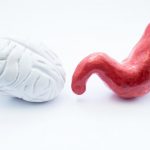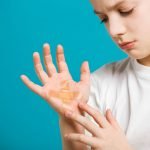Is It Really ADHD?
Rich Petke, NMD
Some parents of a child labeled with “undesirable behaviors” will seek out a naturopathic physician even before trying pharmaceuticals; some parents turn to natural medicine only after numerous medications in varying forms and dosages have resulted in either no positive changes in behaviors or “zoned out” children. In either case, it becomes the job of the naturopathic physician to figure out what is really going on and how to effectively treat the child. Here are a few things to consider before trying the alternative therapies for ADHD listed at the end of this article.Attention-Deficit/Hyperactivity Disorder (ADHD) – predominantly inattentive presentation (314.00 / F90.0), predominantly hyperactive/impulsive presentation (314.01 / F90.1), and combined presentation (314.01 / F90.2) – is perhaps one of the most overused and improperly used diagnoses in pediatrics at present.1 Countless children are needlessly placed on amphetamines or atomoxetine, in many cases simply for the convenience of the child’s school. If a child really does have some form of ADHD, these pharmaceuticals can make a noticeable difference in the child’s ability to function and learn in traditional educational environments.2 But, for those children who do not truly have some form of ADHD, these medications needlessly alter their physiology and mental processes.
Start with the Basics
Toileting accidents are common in preschool and early-elementary children. Once a child is toilet-trained, parents and teachers tend to assume a child knows what he or she is doing, and they give the child his or her privacy. But it’s hard to sit still with an itchy buttock rash. A chief concern of behavioral issues still warrants a complete physical examination by a physician.
Always include an examination of the child’s tonsils in the physical exam. Enlarged tonsils can be an indication of snoring, which robs a child of restful sleep. Tired children act inattentive, which they are, but for a totally different reason than ADHD. Does the child have impacted cerumen?
An evaluation of a child’s hearing and vision should also be conducted. A child who cannot clearly see the classroom board or who has a mild hearing loss will miss critical information and may be inaccurately “diagnosed” by the classroom teacher. Always ask for the details of the undesirable behaviors; summary diagnoses frequently omit crucial information.
Digging a Little Deeper
Retained Reflexes: Contrary to popular belief, infant (primitive) reflexes do not always integrate as developmental timelines indicate.3 It’s hard to sit still if the Spinal Galant reflex is still active; the back of a chair can trigger the reflex and cause the child to twitch, just like a newborn twitches when a finger is run along its spine. This may look like fidgeting, but it is simply a reflex action. In older children, look for a still-active Asymmetric Tonic Neck Reflex or a Symmetric Tonic Neck Reflex (STNR).4 (A child who does not exhibit ADHD-like behaviors when working at a standing-height desk with elbows bent may simply have a still-active STNR postural reflex.) Testing for the presence of retained reflexes, and procedures for encouraging their integration, is a relatively new field of study, but one that every physician who treats children should at least be aware of. Referring the child for a retained reflex evaluation may be warranted.
Kinesthetic Learning Preference: There are 3 basic ways humans learn: visual, audio, and kinesthetic. Most schools are designed for students who learn via visual and/or audio mechanisms. Kinesthetic learners – those who need to move in order to assimilate and/or retrieve information, or who need to engage tactile sensory inputs in order to understand a concept – are at a distinct disadvantage in traditional classrooms. One simple way to test for this possibility is to observe a child who is suspected of having hyperactive (ADHD) behavior while performing a manipulative task such as the block designs subtest of a standard IQ test. A child who easily focuses on the task and shows no other signs of extraneous movement during the test may be a kinesthetic learner and not have ADHD. Another simple test is to ask a child to read a story aloud, first sitting still and then while walking around the room. Kinesthetic children typically exhibit a noticeable increase in their reading fluency and accuracy when allowed to move while reading.
Dominant Ear: Many individuals exhibit a preference for receiving certain types of information through a specific ear.5 Switching a phone to the opposite ear when the caller starts to give the recipient technical information, such as driving directions, is a typical example of this preference. A student who turns his head to one side in order to better process the information being presented may be seen by a classroom teacher as turning to talk to a classmate. Simply moving the student’s seating in the classroom to a position where his dominant ear is naturally oriented toward the teacher can reduce stress in both the student and the teacher, and keep the student from distracting other students in the classroom.
Scotopic Sensitivity (Irlen) Syndrome: Many people with Irlen syndrome are sensitive to fluorescent lighting, which is used extensively in classrooms.6 Irlen syndrome can manifest as anxiety, hyperactive behavior, inattentive behavior, and various reading and coordination disorders. A child who is being evaluated for ADHD-type behaviors should be asked questions from an Irlen syndrome questionnaire. Observing a child’s behavior change when fluorescent lights are turned off provides an indication of the syndrome. Irlen syndrome is highly genetic in its presentation; inquiring about anxieties, light sensitivities, and reading and coordination challenges in the child’s parents can provide useful information for the child’s diagnosis. If Irlen syndrome is suspected, the child should be evaluated by a certified Irlen screener or diagnostician before any further remediation is attempted.
Gifted and Bored: Undiagnosed gifted children often perform poorly in traditional classrooms.7 They may be so bored with certain assignments that they either race through them and are labeled as “impulsive,” or just blow them off completely and become labeled as “inattentive.” They may also look inattentive during lectures. Keep in mind that gifted children are rarely gifted across the board. They excel in certain areas, are statistically normal in other areas, and may even be below-average in some areas, even to the point of having a learning disability (the so-called “twice exceptional” children). Giftedness can be less than obvious and can manifest in behaviors often seen in ADHD children. School psychologists are typically kept busy evaluating children on the other end of the IQ spectrum; and while schools are required to identify gifted children, these evaluations are often considered low priority. Referring a child suspected of being gifted to a private psychologist or a developmental pediatrician equipped to administer brief IQ tests can often provide the objective information needed to initiate classroom placement changes and/or escalate the request for the child to be formally evaluated by the school psychologist.
Tourette’s Syndrome: Tourette’s is frequently misinterpreted as some form of ADHD, especially in its early stages of onset. A child who can’t sit still due to twitches and makes distracting sounds may appear to be hyperactive, but should be evaluated for Tourette’s. Note that only a minority of those with Tourette’s utter profanity and that this aspect of the syndrome usually doesn’t manifest until adolescence, while the base condition manifests between 3 and 9 years of age.8
Environmental Toxins: Suspect toxins if the child’s ADHD behavior is periodic (worse at a given time each week or month, with gradual improvement until the same time next week or month) and/or is exhibited only in certain locations. Look for correlations between the child’s behaviors and the timing of the application of pesticides (at home or school), cleansers, consumption of potentially-unsafe well water at a relative’s house, parental hobbies such as lead or soldering work, the use of solvents, or simply the use of the new laundry detergent used to wash the child’s clothing.
Absence Seizures: Seizures lasting 10 seconds or longer are easy to notice, but short-duration seizures, especially multiple seizures of very short duration, may go unnoticed. A child who is only “present” for segments of instruction may interpret instructions totally differently than a child who heard the full discourse. The child experiencing absence seizures may be seen as “inattentive” as a result.
Food Allergies and Diet: What is the child eating? Some foods may make a child hyperactive, and some foods make a child drowsy. Children who do not eat breakfast or who have diets missing essential nutrients may perform poorly in school for simply that reason. Diet and nutrition reviews are almost always warranted when evaluating a child with behavioral challenges.
Other Challenges: Apparent inattentiveness and hyperactivity in the classroom can be caused by other learning challenges, such as dyslexia, general anxieties, autism spectrum disorders, language delays, and intellectual impairments; a child might also be naturally very active. If any of these are suspected, a full evaluation by a psychologist or developmental pediatrician is warranted.
Natural Remedies for True ADHD
A child who truly has some form of ADHD usually needs help to control his or her behavior in a classroom environment. The key point to keep in mind is that physical substances – natural or pharmaceutical – are only part of the treatment. The goal of any treatment plan should be to use these substances only to resolve underlying conditions or as a temporary support mechanism while the individual learns how to naturally control her behaviors in structured social settings.
- GABA (Gamma-Aminobutyric Acid) can be effective for improving concentration. In the author’s experience, most patients with ADHD who have used both amphetamines and GABA report that amphetamines act like “white noise” blocking out the distractions in the environment, while GABA tends to help them gather and organize their thoughts. This explanation makes sense, as the amphetamines are stimulants and GABA is an amino acid interacting with the brain’s neurotransmitters. Sometimes asking a child if his challenges are more with the distractions in the room or with internal focus can help lead the physician to an appropriate treatment strategy. Note that some children may need help in both areas.
- L-Theanine is another amino acid that may help a child to focus, especially if there are any anxieties among his or her challenges.
- Vitamins, especially the B vitamins, are critical for behavioral control and focus, while adding magnesium helps to calm hyperactivity.
- There are, of course, numerous herbs that can be used to enhance memory and attention and to calm hyperactivity. The choice of which herbs to use depends on the child’s specific challenges, the child’s age, and other challenges associated with the behavioral issues.
- Homeopathy can also be effective when an accurate case can be taken. When dealing with ADHD and other behavioral challenges, it’s tempting to select a remedy based solely on rubrics from the MIND chapter. Remember to select remedies that treat the whole individual.
- Flower essences can offer further help when a childand/or his caregivers can identify the emotions surrounding his academic struggles.
- Finally, remember to include tutoring for study skills as an essential part of the treatment plan.
 Rich Petke, NMD, is a graduate of the Southwest College of Naturopathic Medicine and Health Sciences. He divides his time between his family medical practice (All Ways Health) in Flagstaff, AZ, and Jordan Developmental Pediatrics in Phoenix, where he evaluates and treats children with developmental challenges (developmental delay, autism, language delays, etc), learning challenges (ADHD, behavior, reading, dyslexia, gifted, etc), and other special needs. He is a certified Irlen screener, former Brain Gym instructor, and has extensively studied primitive reflex identification and integration. He is a frequent speaker at conferences of the Arizona Association for Gifted and Talented.
Rich Petke, NMD, is a graduate of the Southwest College of Naturopathic Medicine and Health Sciences. He divides his time between his family medical practice (All Ways Health) in Flagstaff, AZ, and Jordan Developmental Pediatrics in Phoenix, where he evaluates and treats children with developmental challenges (developmental delay, autism, language delays, etc), learning challenges (ADHD, behavior, reading, dyslexia, gifted, etc), and other special needs. He is a certified Irlen screener, former Brain Gym instructor, and has extensively studied primitive reflex identification and integration. He is a frequent speaker at conferences of the Arizona Association for Gifted and Talented.
References
- Morley CP. Disparities in ADHD assessment, diagnosis, and treatment. Int J Psychiatry Med. 2010;40(4):383-389.
- Barkley RA, Cunningham CE. Do stimulant drugs improve the academic performance of hyperkinetic children? A review of outcome studies. Clin Pediatr (Phila). 1978;17(1): 85-92.
- Masgutova S. Integration of Dynamic and Postural Reflexes into the Whole Body Movement Systems. Poland: International Neurokinesiology Institute; 2004.
- Taylor M, Houghton S, Chapman E. Primitive Reflexes and Attention-Deficit/Hyperactivity Disorder: Developmental Origins of Classroom Dysfunction. Int J Spec Educ. 2004;19(1):23-37.
- Hannaford C. The Dominance Factor: How Knowing Your Dominant Eye, Ear, Brain, Hand and Foot Can Improve Your Learning. Marshall, NC: Great Ocean Publishers; 1997.
- Irlen H. Reading by the Colors: Overcoming Dyslexia and Other Reading Disabilities Through the Irlen Method. New York, NY: Perigree Books; 2005.
- Webb JT. Misdiagnosis and Dual Diagnoses of Gifted Children and Adults: ADHD, Bipolar, Ocd, Asperberger’s, Depression, and Other Disorders. Tucson, AZ: Great Potential Press; 2005.
- Goldenberg JN, Brown SB, Weiner WJ. H. Coprolalia in younger patients with Gilles de la Tourette syndrome. Mov Disord. 1995;9(6):622-625.









